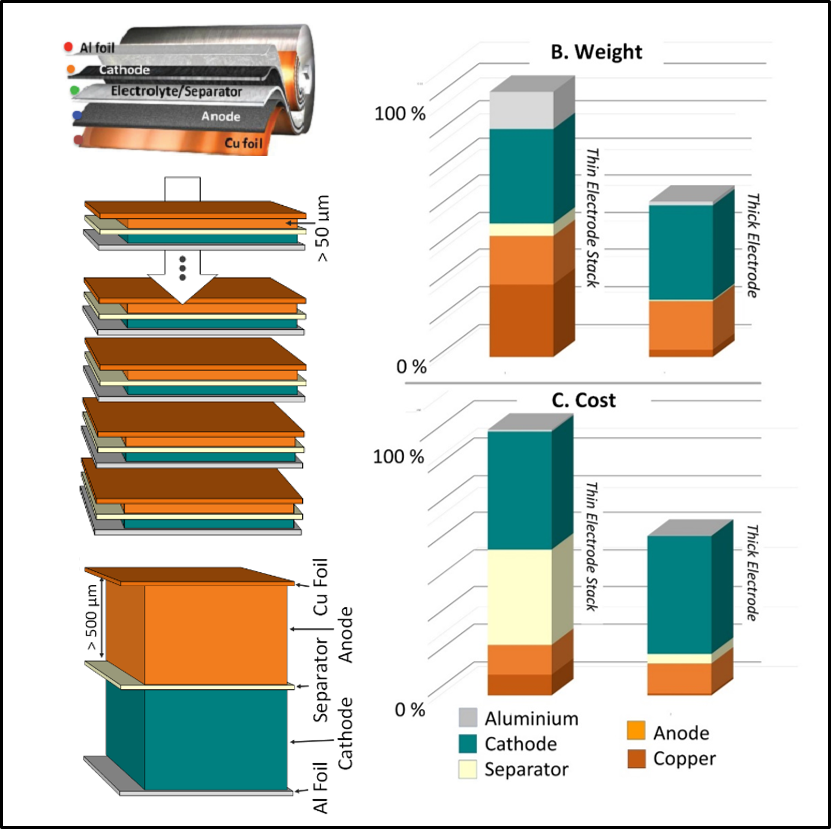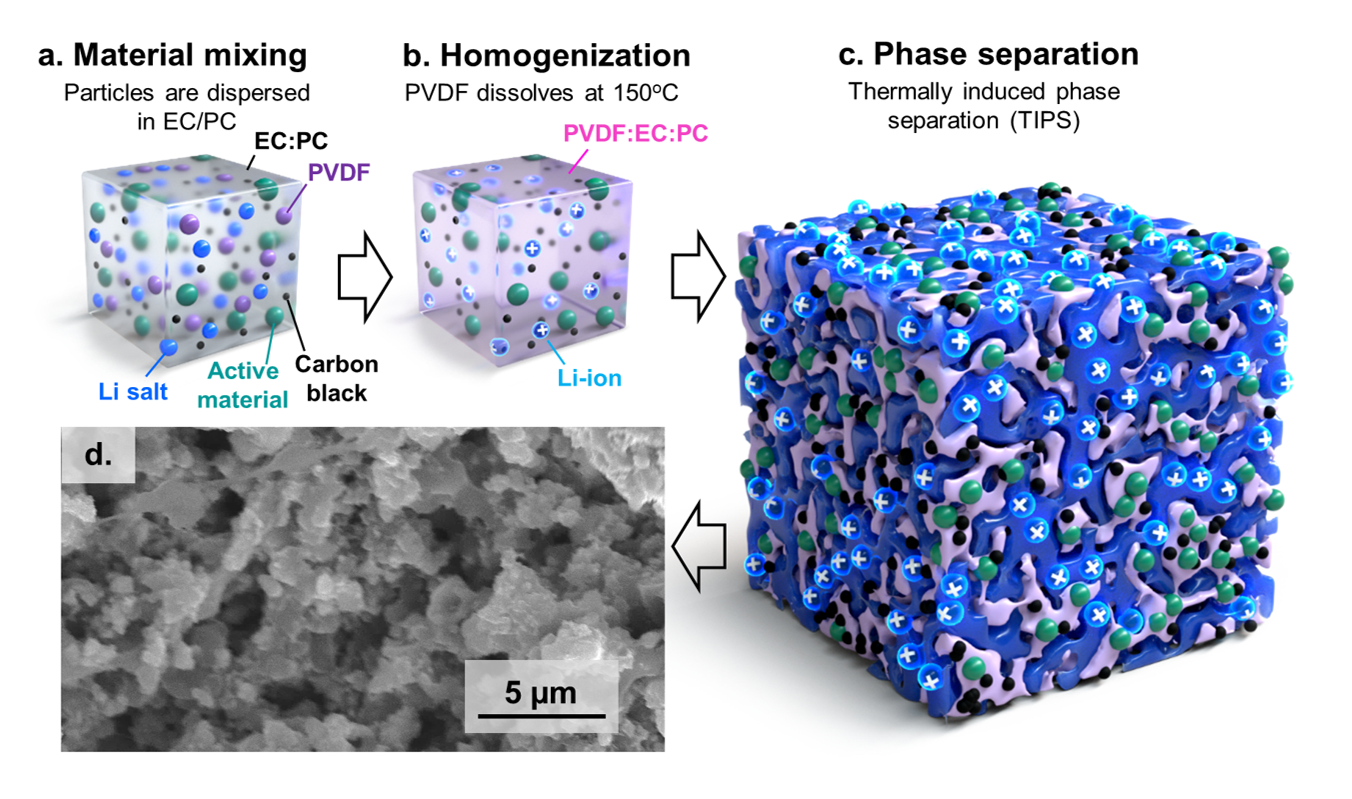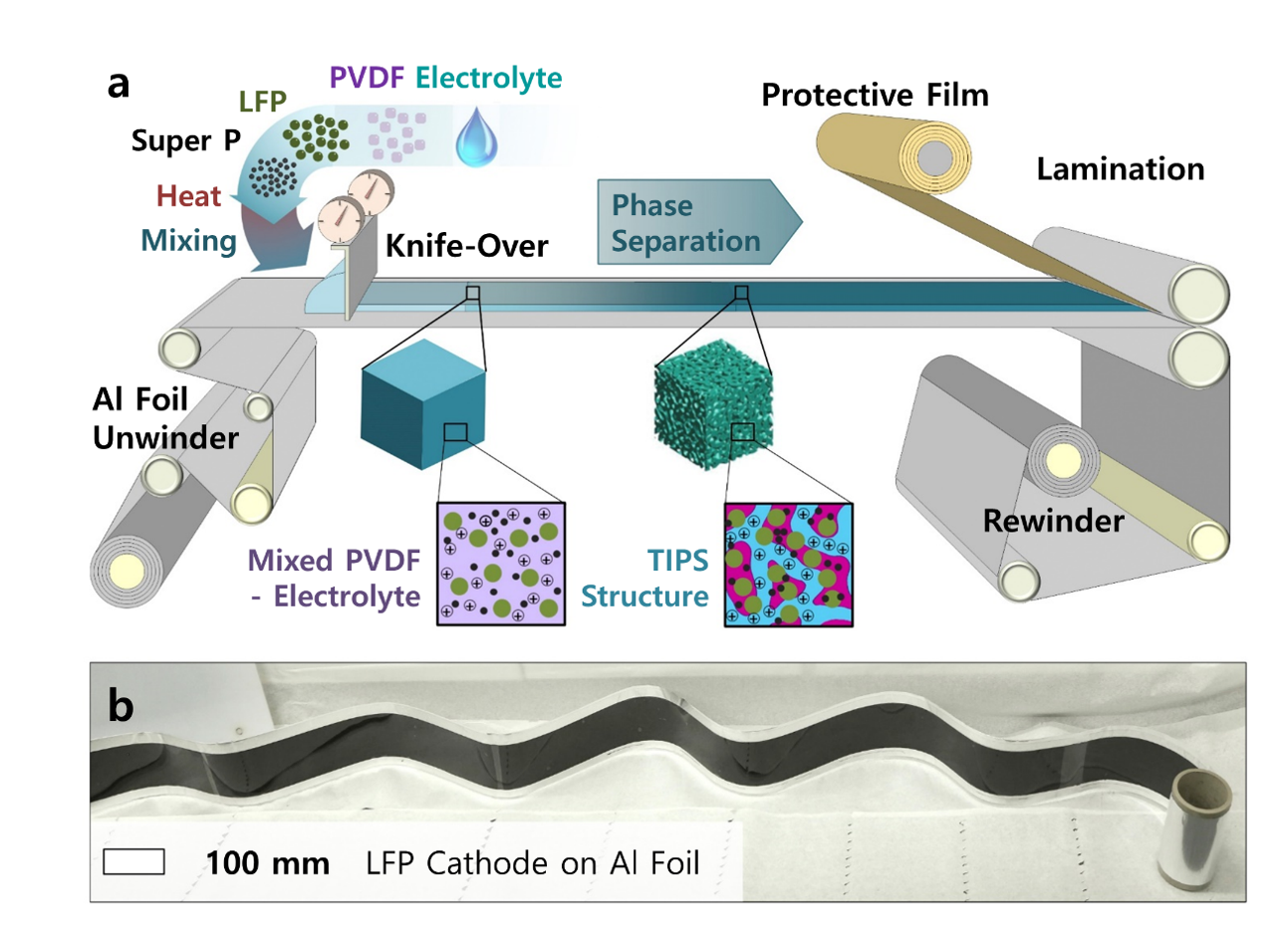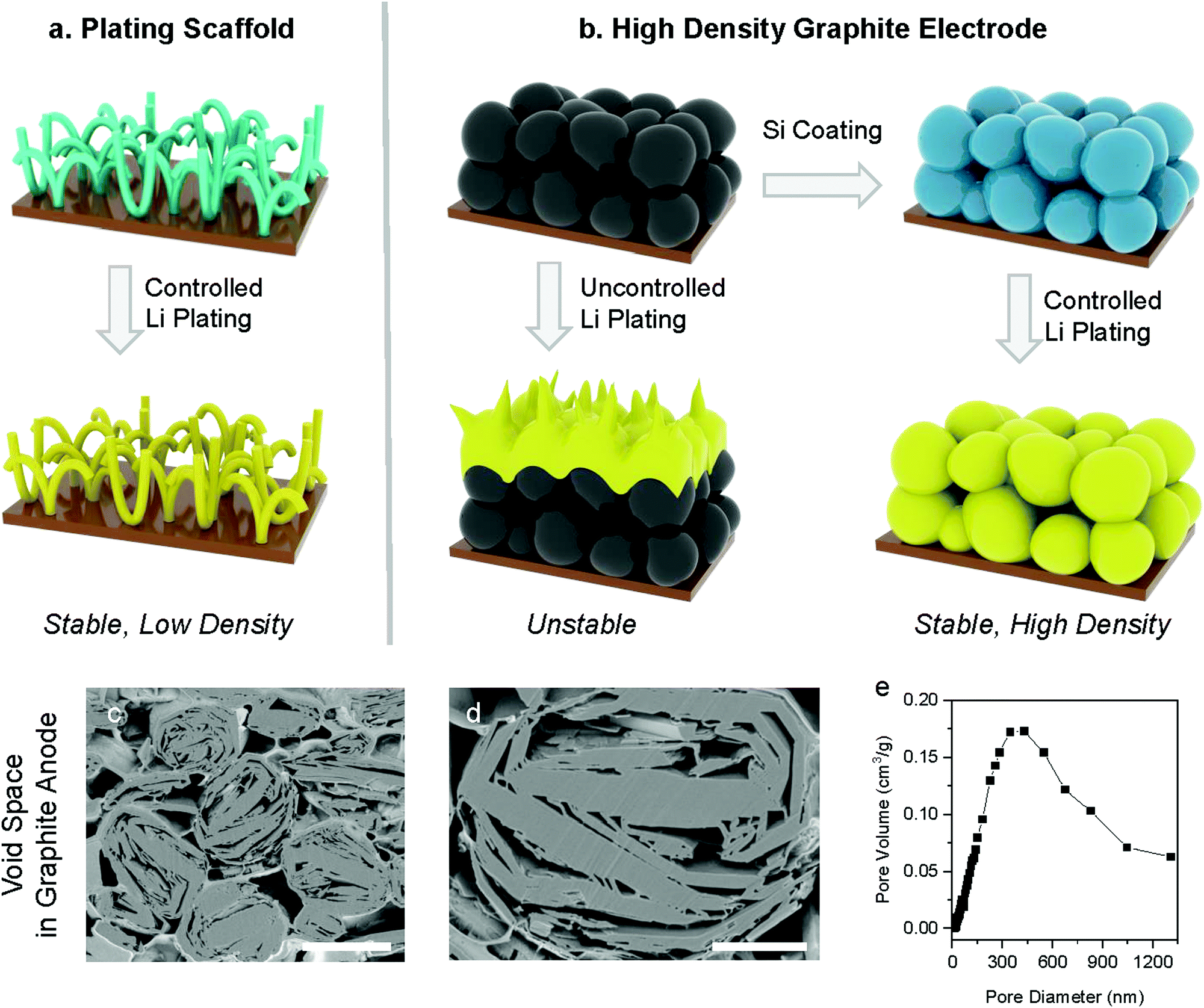Increasing the thickness of battery electrodes is an attractive approach to reduce the fraction of battery parts that do not store energy, such as current collectors and separators. As depicted in the image below, increasing the thickness of battery electrodes from 50 um to 500 um allows to reduce the weight and cost of batteries.

However, the fabrication of thick electrodes holds challenges of its own such as cracking or flaking during the electrode production and limitations in ion and electron transport. Our research group has developed a number of techniques to create thicker battery electrodes. For instance, using the CNTs patterning method described here, honecycomb-shaped collector electrodes were developed as depicted in the image below. In this work, the active battery materials are synthesised directly on on the surface of CNTs using microwave hydrothermal methods. More information on these batteries can be found here.

For industrial applications, the scalability of the fabrication process is critical, and therefore we developed a scalable temperature induced phase segregation process. This was developed on a on a pilot-scale roll-to-roll tool using a variety of different active battery materials (LFP, NMC, LTO). This electrode structuring method creates a bi-continuous electrolyte and electrode network with excellent ion and electron transport reducing the charge-transport challenges in thick electrodes.

We developed a thermally induced phase separation (TIPS) process for fabricating thick Li-ion battery electrodes, which incorporates the electrolyte directly in the electrode and alleviates the need to dry the electrode. The proposed TIPS process creates a bicontinuous electrolyte and electrode network with excellent ion and electron transport, respectively, and consequently achieves better rate performance. Electrodes that are more than 1 mm thick have been developed and areal capacities of more than 30 mAh/cm2 are demonstrated. Capacity retentions of 87% are attained over 500 cycles in full cells with 1-mm-thick anodes and cathodes. Finally, we verified the scalability of the TIPS process by coating thick electrodes continuously on a pilot-scale roll-to-roll coating tool. This process is depicted below and more information on the process as well as the resulting battery performance can be found here.

To increase the energy density of LIB anodes, silicon and lithium metal are considered as a replacement for graphite anodes that are used commercially. However these new anodes suffer from degradation processes associated with their volume expansion and side reactions. Moreover, lithium metal based anodes also suffer from safety issues due to dendritic lithium growth. Finally, it is difficult to exceed the areal and volumetric capacities of commercial graphite anodes, which have undergone years of industrial optimisation. Herein, we leverage the advances made in industrial graphite LIB anode manufacturing and coat these with a thin silicon layer that allows for stable lithium metal plating and stripping inside the pores that are present in graphite anodes. As a result, our anodes store energy through a combination of intercalation in graphite, alloying with Si and Li plating within the same electrode volume where standard commercial graphite anodes only use intercalation. As a result, we achieve full cell energy densities of 474 W h kg−1 and 912 W h L−1, which is a step forward compared to previous work using either graphite or Li-metal anodes. This research was conducted in collaboration with Prof Jaephil Cho at UNIST and more information about this work can be found here.

